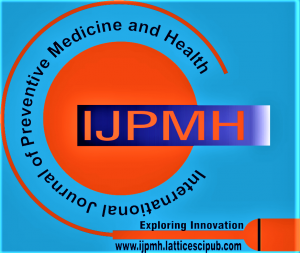![]()
Distance Does Not Matter any Longer – India Emerges as a Leader in Telehealth
Roopashree. M. R1, Niranjan Ramakrishan2
1Dr. Roopashree M.R, Ph.D Scholar, Department of Finance and Management Sciences, M.S. Ramaiah University of Applied Science, Bangalore (Karnataka), India
2Niranjan Ramakrishan, CEO MyLab Connect, Chennai (Tamil Nadu), India.
Manuscript received on 01 May 2023 | Revised Manuscript received on 19May 2023 | Manuscript Accepted on 15 July 2023 | Manuscript published on 30 July 2023 | PP: 1-13 | Volume-3 Issue-5, July 2023 | Retrieval Number: 100.1/ijpmh.E1023073523 | DOI: 10.54105/ijpmh.E1023.073523
Open Access | Ethics and Policies | Cite | Zenodo | Indexing and Abstracting
© The Authors. Published by Lattice Science Publication (LSP). This is an open-access article under the CC-BY-NC-ND license (http://creativecommons.org/licenses/by-nc-nd/4.0/)
Abstract: Telehealth is the need of the hour for both healthcare providers & patients. This helps to be innovative with the newer concepts that can be fine-tuned with an Indian perspective. Teleconsultation offers a comprehensive system for small, medium, and large-sized hospitals to manage day-to-day activities and implement managerial strategies that can be integrated into multi-speciality telemedicine services, facilitating collaboration with peripheral units. The study undertaken is cross-sectional and descriptive, employing an observational method. Structured data, including both qualitative and quantitative information, was collected during the commissioning of a telehealth project utilising a hub-and-spoke model for a large hospital situated in a suburban rural area of India. These aspects are elaborated upon, providing insight into project commissioning, challenges, and limitations faced during the operations of telehealth centres, as well as the quality, training, and regulatory aspects of telehealth services in India. The elements of Telemedicine/Telehealth, including Affordability, Accessibility, Reliability, and Scope, with relevance to clinical importance and their role in non-communicable diseases, are discussed. Remote patient monitoring (RPM) is also known as the store-and-forward form of teleconsultation, in which patients upload images to facilitate medical diagnoses. The Hub and Scope model and Vendor Analysis model have been depicted. The measurement model will provide the relevance of vendor analysis for commissioning the telemedicine projects. Telehealth technology enables the remote evaluation of patients by a medical specialist, allowing for the consideration of fluctuations and variations in medical conditions. These patients may be situated at home, where their medications can be adjusted accordingly. With the help of telehealth technology, we can digitally connect remote, rural, and urban areas, providing holistic healthcare services to the most vulnerable individuals in a comprehensive manner. The integration of healthcare that results in a continuum of care is vital. Real-time data for the effective management of staff and caregivers is enumerated.
Keywords: Telemedicine, Reliability, Technology advancements, Communication, Privacy, and Security.
Scope of the Article: Health Informatics
